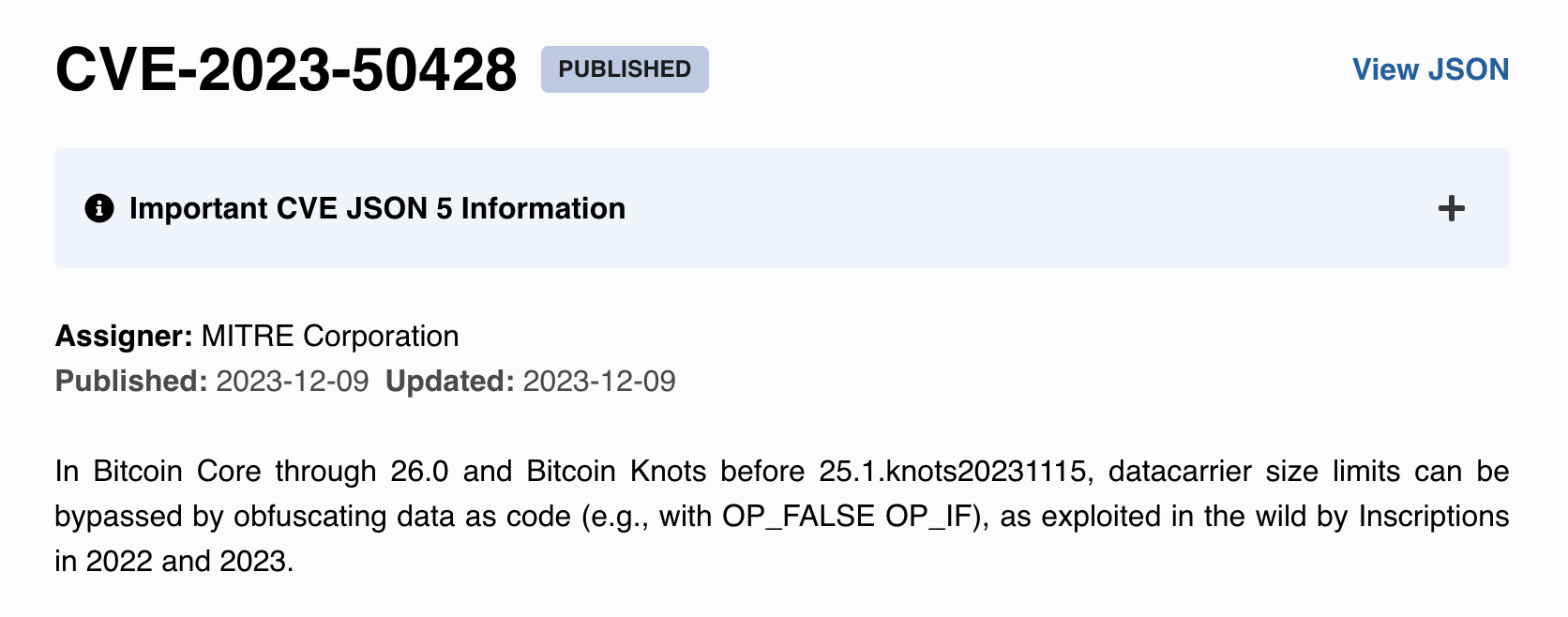Bitcoin inscriptions entered into US National Vulnerability Database
National Vulnerability Database (NVD) on December 9 reported He notes Bitcoin as a cybersecurity risk and points out the security flaw that allowed the development of the Ordinals Protocol in 2022.
According to database records, in some versions of Bitcoin Core and Bitcoin Knots, it is possible to bypass the data bearer limit by obscuring data as code. “As leveraged by Inscriptions in 2022 and 2023” We read in the document.
Being added to the NVD list means that a particular cybersecurity vulnerability has been noticed, cataloged, and deemed important to public awareness. The database is maintained by the National Institute of Standards and Technology (NIST), an agency of the US Department of Commerce.
The vulnerability of the Bitcoin network is currently being analyzed. As a potential impact, it could cause large amounts of non-transactional data to be spammed onto the blockchain, potentially increasing the size of the network and negatively impacting performance and fees.
The NVD website offers a new post on X (formerly Twitter) by Bitcoin Core developer Luke Dashjr as a source of information. dashjr he claims These scripts exploit a vulnerability in Bitcoin Core to send spam to the network. “I guess it’s like getting junk mail that you have to go through every day to find out who your contacts are. It slows down the process.”one user in the discussion wrote.
Why is this important for Ordinals?
A token involves placing additional data into a specific satoshi (the smallest unit of Bitcoin). These data; It can be anything digital such as images, text or other forms of media. Once data is added to a satoshi, it becomes a permanent part of the Bitcoin blockchain.
While data injection has been part of the Bitcoin protocol for some time, its popularity only increased with the emergence of Ordinals towards the end of 2022; this protocol allows unique digital art to be embedded directly into Bitcoin transactions, just like non-fungible tokens do. (NFTs) operate on the Ethereum network.
In 2023, the volume of Ordinal transactions clogged the Bitcoin network several times, causing more competition for transaction confirmation, resulting in increased fees and slower transaction times.
If the error needs to be corrected, can limit Ordinal inscriptions on the network. When asked if there are ordinals and BRC-20 tokens “They will cease to exist” If the vulnerability is fixed, Dashjr replied: “Exactly the same”. However, due to the immutability of the network, existing inscriptions will remain intact.

